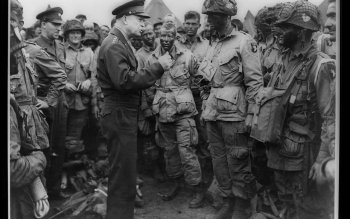
Thank you for your support of Albuquerque-based Pluma Construction Systems. As you know, we provide a full suite of commercial construction services and residential remodeling. Built on a quality foundation of unwavering ethics and quality workmanship we created the Pluma Leadership Minute (heard on 770 KKOB-AM) as a way to share insights with influential people, like you!
Integrity

Today’s Pluma Leadership moment focuses on the 34th President of the United States, who once said “The supreme quality for leadership is unquestionably integrity. Without it, no real success is possible, no matter whether it is on a section gang (railroad workers), a football field, in an army, or in an office.” Being honest and showing a consistent and uncompromising adherence to strong moral and ethical principles and values are the essential qualities an effective leader must possess.
Mean what you say and do what you say. This is undeniably one of the most important characteristics any leader must possess to be successful. Stand firm on the decisions you make. Leaders remember trust is gained, and loyalty is returned, only with integrity.

During World War II, this leader became a five-star general in the Army and served as Supreme Commander of the Allied Expeditionary Force in Europe. He became one of the most important Allied generals of World War II and was promoted to General of the Army in 1944 where he led the Allied Forces to victory.

In June 1956 he signed the federal Aid Highway Act of 1956 into law. Under the act, the federal government would pay for 90 percent of the cost of construction of interstate highways. creating the backbone of our interstate system.

His support of the Federal-Aid highway Act of 1956 can be directly attributed to his experiences in 1919 as a participant in the U.S. Army‘s first Transcontinental Motor Convoy across the United States on the historic Lincoln Highway, which was the first road across America. The Highly publicized need for better main highways and continued federal aid.
In the wake of Sputnik in 1957 (a series of three artificial earth satellites launched by the soviet union which unveiled the space age), this leader responded to the Soviet challenge and to public concern and excitement by reorganizing the American space effort.

With a swipe of his pen a new government agency to conduct civilian space exploration was signed into existence.
In 1958 the National Aeronautics and Space Administration (NASA) was born.
This leader is President Dwight D. Eisenhower.
Integrity is an essential trait for every leader. Integrity is not always easy, and sometimes requires doing the harder right rather than the easier wrong.
However, as President Eisenhower reminded us;
“Without integrity, no real success is possible.

FUN FACTS!
1. “IKE” IS THE ENTIRE FAMILY’S NICKNAME. Speaking of names, it’s easy to assume that his nickname (as in “I like Ike”) came from his first name. But the nickname stems from Eisenhower, and it’s the nickname the whole family went by. All seven Eisenhower boys used it (Edgar was “Big Ike” while Dwight was actually “Little Ike”). Dwight was the only one still using the nickname by WWII.
2. HE PRESIDED OVER DESEGREGATING THE MILITARY AND THE SCHOOLS. President Truman started the process of desegregating the military in 1948, but President Eisenhower completed it by actively campaigning, using budgets as leverage, and declaring racial discrimination a national security issue. In a bold move, Eisenhower also briefly federalized the Arkansas National Guard and committed the 101st Airborne Division to protect nine black students as they attended, for the first time since Reconstruction, an all-white school in Little Rock after Governor Orval Faubus refused to comply with the desegregating court order handed down in Brown v. Board of Education.
3. ALASKA AND HAWAII BECAME STATES UNDER HIS WATCH. After Arizona was admitted to the Union in 1912, the United States went 47 years with 48 stars on the flag. The United States had purchased Alaska from the Russian Empire in 1867 and annexed Hawaii in 1898, but it took Eisenhower campaigning on the issue of statehood and the right Congressional environment for both to make the leap from territory to state. Congress thought Alaska, with its oil riches, should come first, but Eisenhower was worried the new state would disrupt his plans to set up military installations close to Soviet Russia. Congress won out. Alaska was admitted January 3, 1959, and Hawaii eight months later on August 21.
4. HE LEFT ACTIVE DUTY TO BECOME PRESIDENT AND RETURNED TO ACTIVE DUTY WHEN HIS TERM WAS OVER. Though he never saw active combat, Eisenhower’s military career spanned WWI and WWII. After graduating from West Point he served in logistics and, later, infantry units located stateside, and after the United States entered WWI, he trained tank crews in Gettysburg, Pennsylvania. He languished after the war, spending 12 years as a major, but he also served as chief military aide to then-Army Chief of Staff General Douglas MacArthur, and acted as commanding officer for the 15th Infantry at Fort Lewis and chief of staff to then-Commander of the Third Army General Walter Krueger during his climb up the promotion ladder to Colonel. By the attack on Pearl Harbor, Eisenhower was already a Brigadier General (one star) in a command role that would have kept him far from the battlefield. Still, Eisenhower was one of only nine Americans to reach the five-star rank as General of the Army, the second-highest possible Army rank. As a rule, Generals of the Army never retire but remain on active duty status until they die. That’s why President John F. Kennedy signed a Public Law on March 22, 1961 returning Eisenhower to active duty at his five-star rank following Ike’s presidential service. You may have seen the insignia of the General of the Army (five stars in the shape of the star) posted on highway signs commemorating Eisenhower’s military service and infrastructure expansion.
5. HE MADE OVER 200 PAINTINGS. After showing interest in the craft when his wife Mamie sat for a portrait, then-president of Columbia University Eisenhower received a paint kit from the artist Thomas E. Stephens. Still, it wasn’t until he was 58 (and when Winston Churchill encouraged him) that Eisenhower took up painting seriously as a hobby. The former President made at least 250 paintings, but had a self-deprecating sense about his art. At an exhibition of his work at the Huntington Hartford Museum in 1967, a reporter asked Eisenhower about the symbolism of one of the works. Eisenhower replied, “They would have burned this sh*t a long time ago if I weren’t the President of the United States.”
6. Eisenhower never saw active combat. Although he spent 35 years in the military and served during both world wars, Eisenhower never saw a single day of active combat. After graduating from the U.S. Military Academy in 1915, he served at various camps across the United States. Eisenhower requested an overseas assignment when America entered World War I, but he remained in training roles at home. By the time the United States entered World War II more than two decades later, Eisenhower had risen to become one of America’s top generals. He eventually was appointed supreme commander of the Allied Expeditionary Force in Europe.
7. Eisenhower banished the White House’s squirrels because they were ruining his putting green.In the spring of 1954, the American Public Golf Association installed an outdoor putting green just steps away the Oval Office. To the dismay of Eisenhower, who was an avid golfer, the squirrels who roamed the White House grounds continually dug up the putting green to bury their acorns and walnuts. “The next time you see one of those squirrels go near my putting green, take a gun and shoot it!” he ordered his valet, Sergeant John Moaney. The Secret Service, however, wisely avoided the use of guns, and instead groundskeepers trapped the squirrels and released them into Rock Creek Park.
8. His first son died of scarlet fever at age 3.Dwight and Mamie Eisenhower’s first son, Doud Dwight, was born on September 24, 1917. Little “Icky” was a happy child, but as Christmas 1920 approached, he fell ill with scarlet fever. The illness soon morphed into meningitis, and the 3-year-old died on January 2, 1921. The following year the couple had their only other child, John.
9. He was the first president to ride in a helicopter. At Eisenhower’s suggestion, the Secret Service approved of the use of helicopters as a more efficient and safer means of travel than limousines for short trips to and from the White House. On July 12, 1957, Eisenhower became the first president to employ the new aviation technology when he rode in a two-passenger Bell H-13J helicopter to Camp David as part of a test of White House evacuation procedures. During his second term, he regularly used helicopters to fly to Camp David and his farm in Gettysburg, Pennsylvania.
10. While president, he spent nearly two months in the hospital.During a September 1955 vacation in Colorado, Eisenhower suffered a heart attack and was rushed to Denver’s Fitzsimmons Army Hospital. He remained in the hospital for nearly seven weeks. His staff took over the hospital’s eighth floor, and with the president’s approval, Vice President Richard Nixon ran cabinet meetings. The following year, Eisenhower underwent an intestinal bypass operation. In spite of his health issues, Eisenhower ran for re-election in 1956 and won in a landslide.

